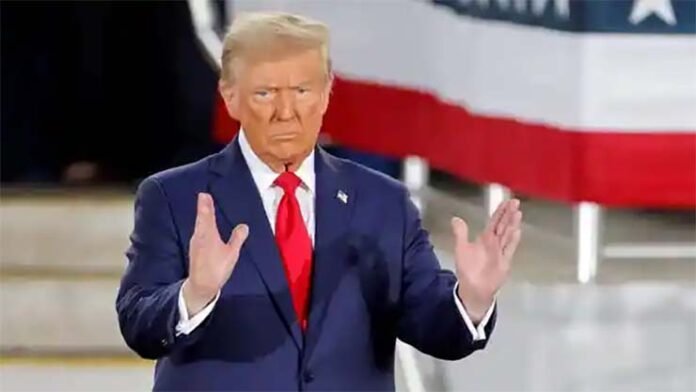New Delhi: The Indian Army’s Northern Command released a carefully produced video that not only showcased the scope and success of Operation Sindoor but also sought to debunk recent claims by US President Donald Trump regarding his alleged role in brokering the Indo-Pak ceasefire.
The three-and-a-half-minute clip, featuring combat footage, aerial reconnaissance visuals, and synchronised missile strikes, was designed to present both a narrative of decisive military response and a clarification of how hostilities ceased.
Central to the video is a rare and direct statement from India’s Director General of Military Operations (DGMO), Lieutenant General Rajiv Ghai, who clarified that “It was the Pakistani DGMO who proposed that we cease hostilities.”
This single but significant line effectively underscored New Delhi’s consistent position that the ceasefire was strictly a bilateral decision between the two militaries, with no foreign mediation involved, thereby countering Washington’s assertion that the truce was an American achievement.
Operation Sindoor, launched in the early hours of May 7, was a coordinated, multi-service retaliatory offensive in direct response to the April 22 terror attack in Pahalgam that had left 26 civilians dead, marking one of the deadliest attacks in recent years.
The operation was executed jointly by the Indian Army, Navy, and Air Force, making use of precision strikes on terror launchpads and critical Pakistani military infrastructure located across both Pakistan and Pakistan-occupied Kashmir (PoK).
What distinguished the strike was the fusion of high-accuracy intelligence, cutting-edge surveillance drones, and calibrated use of air and missile power, which broadened the scope of India’s counter-terror doctrine.
The Indian Army emphasised that the operation was carried out initially with restraint but later transitioned into a more forceful and extended retaliatory campaign as Pakistani forces attempted cross-border counter-attacks in subsequent days.
The timeline of events highlights the escalation dynamics: beginning with the May 7 launch of Operation Sindoor, hostilities intensified following Pakistan’s retaliatory attempts on May 8, 9, and 10, which targeted Indian military facilities.
In swift response, Indian forces carried out multiple and calculated counter-strikes deep inside Pakistani territory, striking military supply depots, launchpads, and forward bases.
The operational footage released in the Army’s video portrayed both the precision and the scale of India’s strikes, presenting them as both militarily decisive and strategically restrained, designed to punish Pakistan’s provocations while minimising collateral civilian damage.
A key political dimension of the Army’s video was its messaging on India’s strategic autonomy in security matters. By releasing a public record that attributes the ceasefire initiative to Pakistan’s own DGMO, India firmly dismissed insinuations of external intervention, particularly those made by President Trump, who had earlier suggested that US diplomatic pressure was responsible for halting the fighting.
The Army’s statement not only corrected the record but also reinforced India’s longstanding rejection of any third-party role in the sensitive matter of its relations with Pakistan.
According to the Army, the ceasefire that came into effect on May 10 was the outcome of mutual discussions between the two military commands, an implicit acknowledgement that while both sides had inflicted significant costs, neither sought a prolonged war.
Visually, the video was designed as much for domestic morale as for international signalling. The production featured high-impact music, drone-captured precision strike footage, and bold all-caps messages, concluding with an assertive frame proclaiming: “A new line is drawn: India will not stop until terrorism is wiped out.”
This final declaration reflected the Army’s intent to shape the narrative of Operation Sindoor as one that represents not merely revenge, but a turning point in India’s counter-terror policy. The framing suggested that India views such retaliatory campaigns as both justified and necessary to deter future cross-border terrorism, underscoring its willingness to escalate when provoked.
In sum, the release of this video served multifaceted objectives: to commemorate a successful military operation, to rally domestic and military morale, to deliver a deterrent message to Pakistan, and crucially, to set the diplomatic record straight regarding the ceasefire.
By giving Lt Gen Rajiv Ghai’s direct on-record assertion the centre stage, the Indian Army sought to firmly establish that the cessation of hostilities was a product of bilateral military pragmatism rather than international mediation.
Operation Sindoor is thus being positioned not just as a retaliation to Pahalgam, but as a defining example of India’s policy of controlled escalation—marked by restraint at the outset, overwhelming response in the face of provocation, and diplomatic insistence on keeping the process bilateral.






